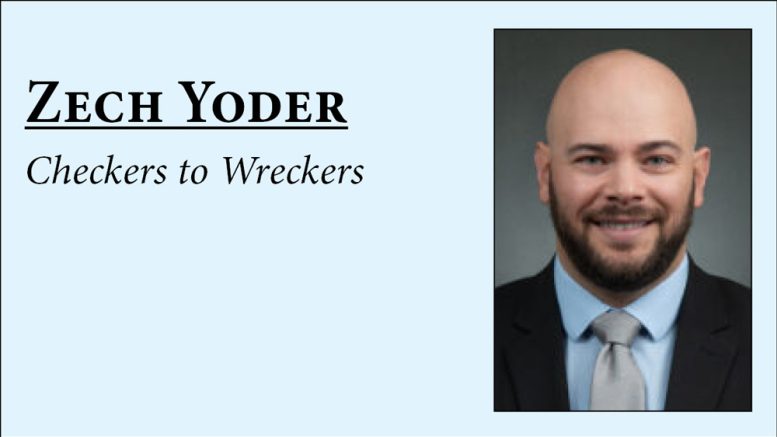By ZECH YODER
For the first time in its history, NASCAR will race on a street course this weekend in Chicago, Ill. The two top series, the Xfinity Series and the Cup Series, will head to the streets of Chicago in the Loop 121 at Chicago Street Course and Grant Park 220, respectively.
For those new or unfamiliar with motorsports, there are, generally speaking, three types of racing circuits. An oval (think Indianapolis Motor Speedway); a road course (a large, permanent track with left- and right-hand turns); and a street course (a temporary racing circuit that is typically constructed in or around a major city).
In the past, NASCAR has competed almost exclusively on ovals with one or two road course races per year. Recently, however, NASCAR, in an effort to expand its market and viewership, has expanded its road course schedule, including six road course races in 2022. This year, NASCAR added a street course.
A street course is unique and quite challenging for a number of reasons. First, like a road course, it features left- and right-hand turns. Second, the track is much narrower and is enclosed on each side with concrete barriers. Unlike a permanent road course, which are built on large open tracts of land, a street course is limited in both layout and width because, as stated above, street courses are integrated into a city street. To protect the city infrastructure, the circuit must be enclosed. Finally, street courses are often bumpy and exacting. Think about driving through downtown Indianapolis: worn pavement, patches, cracks, and even surfaces. Together, these conditions require additional concentration and focus. Passing is difficult and a minor misstep could result in contact with the wall and a multiple car pile-up.
The Chicago has garnered a great deal of attention and quite a bit of controversy. Some question the feasibility of putting 36 3,300-pound cars on a street circuit. Large cars, plus narrow track, plus aggressive drivers, equals big trouble! I understand this argument. The forte of NASCAR is hard, aggressive driving that often leads to contact. Such aggressiveness on a street course will, unquestionably, lead to numerous lengthy cautions. This to me is the biggest question: is it possible for long green flag stretches or will most of the race be run under caution.
Others question the location. Chicago is not your typical NASCAR destination and has dealt with significant levels of crime. Certainly, crime is a concern. However, police presence will be high and those in power will be motivated to keep fans safe. Personally, I think the location is perfect. A great, Midwest American city on the Fourth of July. NASCAR has put a lot of effort into expanding its audience and growing its fan base. Chicago is easily accessible and ticket sales are approximated at 150,000. Why not try something different? Why not try something new? If it doesn’t work, NASCAR will adjust.
For those of you who are skeptical, give it a change. I am going in with no expectations. I think it will be fun to see what happens.
Zech Yoder is a local resident, an attorney at Adler Attorneys in Noblesville, and a lifelong race fan.

